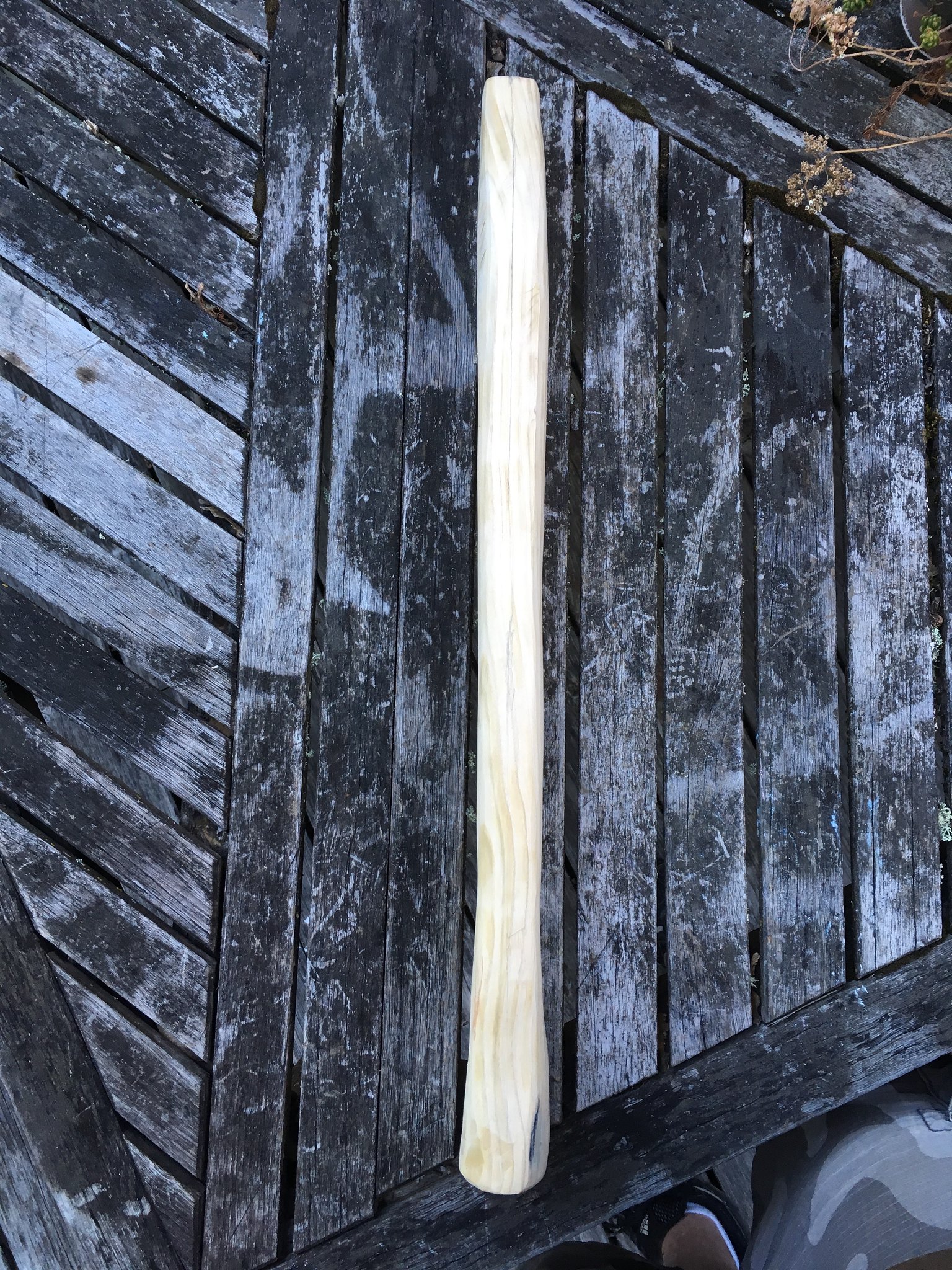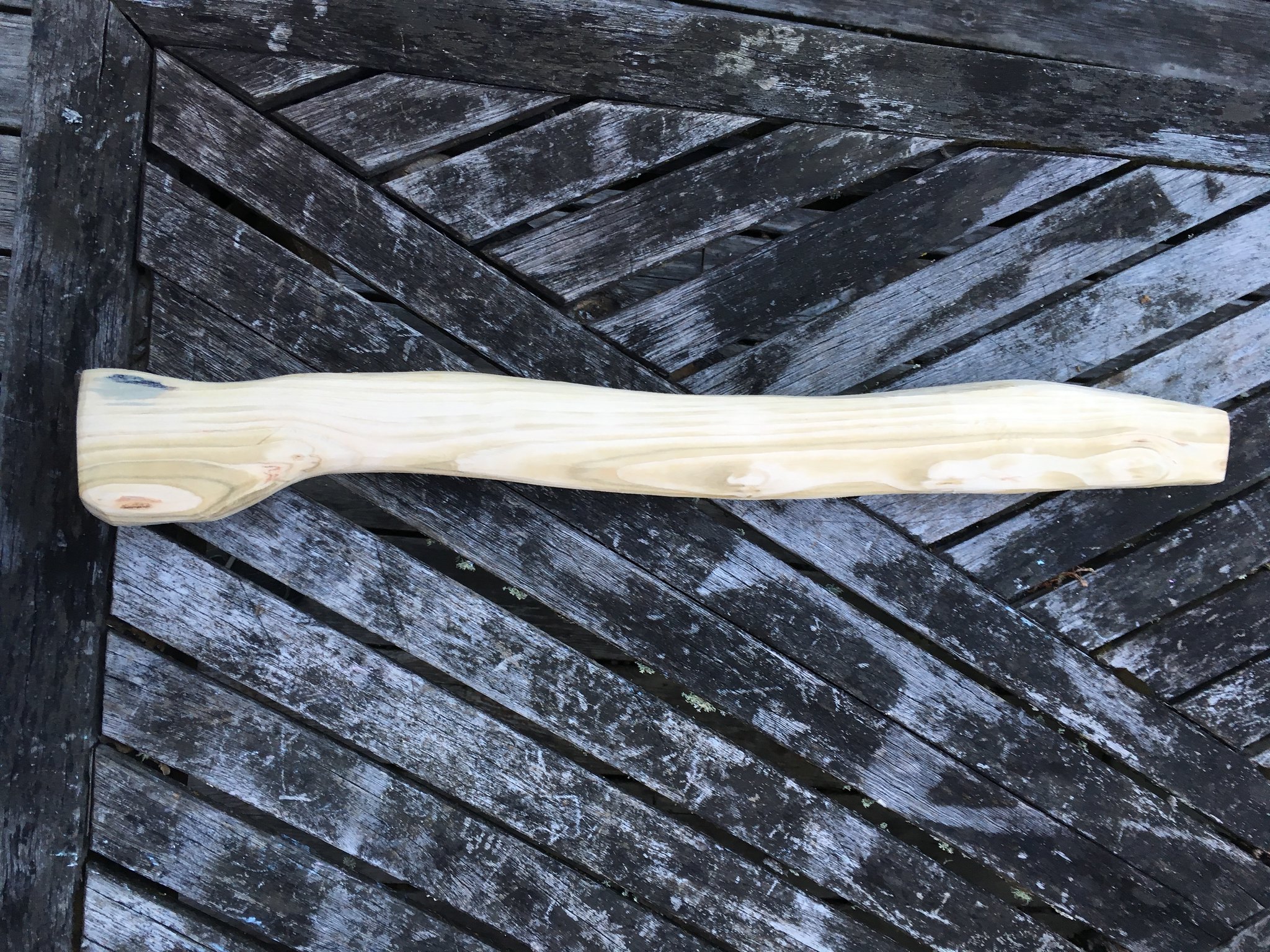Love the paddles 300 but I am just dying to know what you use them in?One on the left was made by a military-pensioned fellow that bought out the paddle-making business and machinery when lifelong wood worker Mr. Lolk retired (when he was 70+ years old) 30 years ago and the one on the right is an original. Craftsmanship of the originals (take notice of the subtly raised spine along the blade) has never been adequately replicated ever since and yet the 'new' fellow has been at it for quite some time and probably makes 500-1000 custom and commercial paddles every year.
You are using an out of date browser. It may not display this or other websites correctly.
You should upgrade or use an alternative browser.
You should upgrade or use an alternative browser.
Raw wood to handle
- Thread starter Agent_H
- Start date
- Joined
- Aug 21, 2013
- Messages
- 3,898
where are you guys finding these old-style scandi axes
They aren't something that you are likely to find at a garage sale.
In my opinion, your best bet is eBay (domestic and international, many countries have their own ".xx" at the end).
Then there are private trades/sales, Tradera, or a foreign "Craigslist" with someone over there to potentially bid for you, pay for you if need be, receive, pick up, and then post it to you internationally.
In order to do that beyond just bidding you do have to put a certain amount of trust in another person whom you havent met in real life - sale, buy, or trade.
It's about axes and using them.
That part is pretty universal.
.
*Always remembering your offerings on the Tapion pöyta can't hurt.
Last edited:
Canucks are renowned for recreational use of shallow draft water craft that were invented by the original inhabitants of north America. These are canoe paddles and for some reason (that I've never been able to figure out) Black Cherry has traditionally been considered best suited. Long wide clear Cherry boards aren't so easy to come by anymore and I've noticed custom paddles increasingly being made from Sugar Maple, White Ash and even Black Walnut. Lesser expensive paddles tend to be made from White Pine or laminated hardwoods. And then of course there's new-fangled aluminum shafts and plastic blades which are pretty much taking over the market.Love the paddles 300 but I am just dying to know what you use them in?
- Joined
- Feb 1, 2012
- Messages
- 13,727
I think Garry3 was hoping to see pics of a beautiful wooden canoe to match the paddles.
- Joined
- Aug 21, 2013
- Messages
- 3,898
I think Garry3 was hoping to see pics of a beautiful wooden canoe to match the paddles.
Or even one befitting the paddles
The vintage wood and canvas ones have a soul.I think Garry3 was hoping to see pics of a beautiful wooden canoe to match the paddles.
I'd hate to disappoint him with my now scratched and faded 46 year old 'made in Shawinigan PQ' 16 foot fiberglass serial number 78, that was new when I bought it. I've cleaned up quite a few classic canvas/cedar strip Chestnuts and Peterboroughs over the years but these don't tolerate any abuse (don't pull them up on a rocky beach, even) and they require a lot of maintenance.I think Garry3 was hoping to see pics of a beautiful wooden canoe to match the paddles.
That they do! There is an inherent flex to these that no plastic or aluminum can duplicate. But you've got to have paddled an awful lot in order to appreciate (or even notice) that. Sort of like wood axe handles!The vintage wood and canvas ones have a soul.
- Joined
- Aug 21, 2013
- Messages
- 3,898
My father had several handmade drift boats come through that I could say were "works of a lifetime" or at least something you couldn't buy readily at the time - commercially, at least.
What the wood they were made from and where they were initially started from a "spine" (I imagine locally), is something I will have to ask him about. And I will - he will enjoy the recall. Love yer Dad while you can in person.

Those base craft instill the same feeling I get from the seeing this picture of the Cherry paddles.
"Laughter and Lacquer" - thick enough to taint the best made of a man's clothing. That can't be reproduced or faked.
Oarlocks are another passion altogether.
What the wood they were made from and where they were initially started from a "spine" (I imagine locally), is something I will have to ask him about. And I will - he will enjoy the recall. Love yer Dad while you can in person.

Those base craft instill the same feeling I get from the seeing this picture of the Cherry paddles.
"Laughter and Lacquer" - thick enough to taint the best made of a man's clothing. That can't be reproduced or faked.
Oarlocks are another passion altogether.
Osage reacts to sunlight and darkens quickly. I've heard that you can wipe it with bleach to quick "age" it. Fuming with ammonia also works. I bet it would with Cherry also.
Fuming or wiping with ammonia or lye works to darken cherry, mahogany, & similar woods - Osage too I would bet. Bleaches probably would not do so, but I've never tried it. Bleaches tend to be acidic, and you want a base for oxidation. I've followed lye with a mild bleach (hydrogen peroxide) that liberates oxygen when the lye neutralizes the bleach. The oxygen helps the color along - just don't try it with chlorine bleach!
If you don't have the patience to age-darken cherry, apple then you have a problem. Merely exposing them to moving air and full sunlight accelerates the process but cracks and checking are often side-effects.
A Yuppie house renovation customer I had 25 years ago insisted his authentic new trim and baseboards (re-creations of 100 year old Doug Fir shellacked ones) immediately match the 1918 originals. A local custom paint company created and mixed up a stain to match (and the customer bought into it) but when you looked close the grain and colour of the wood was reversed. I don't know what the fellow's interior trim looks like now but for sure it doesn't match the originals.
A Yuppie house renovation customer I had 25 years ago insisted his authentic new trim and baseboards (re-creations of 100 year old Doug Fir shellacked ones) immediately match the 1918 originals. A local custom paint company created and mixed up a stain to match (and the customer bought into it) but when you looked close the grain and colour of the wood was reversed. I don't know what the fellow's interior trim looks like now but for sure it doesn't match the originals.
- Joined
- Aug 21, 2013
- Messages
- 3,898
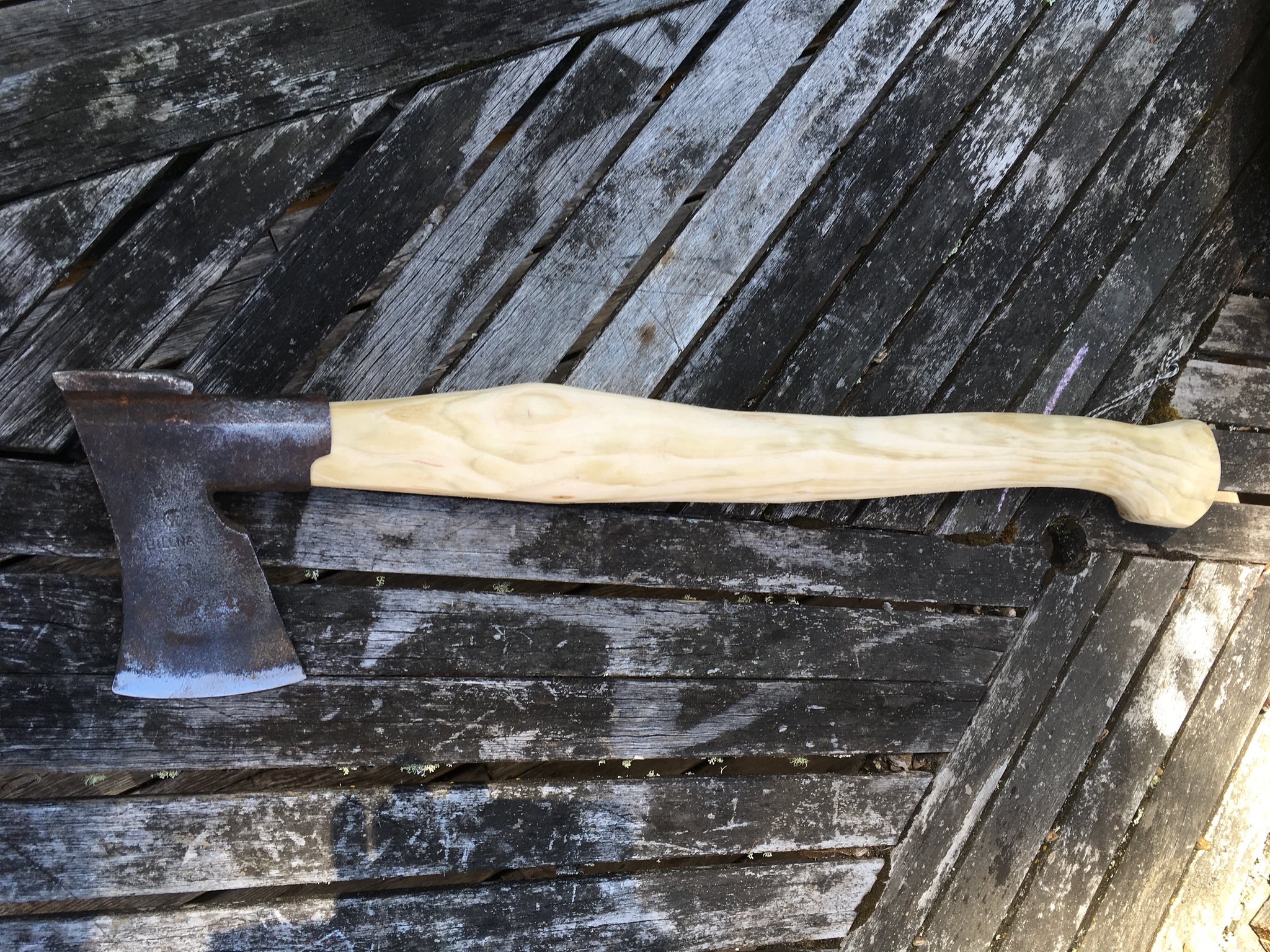 Cherry Flavored Kemi 12.3 by Agent Hierarchy, on Flickr
Cherry Flavored Kemi 12.3 by Agent Hierarchy, on Flickr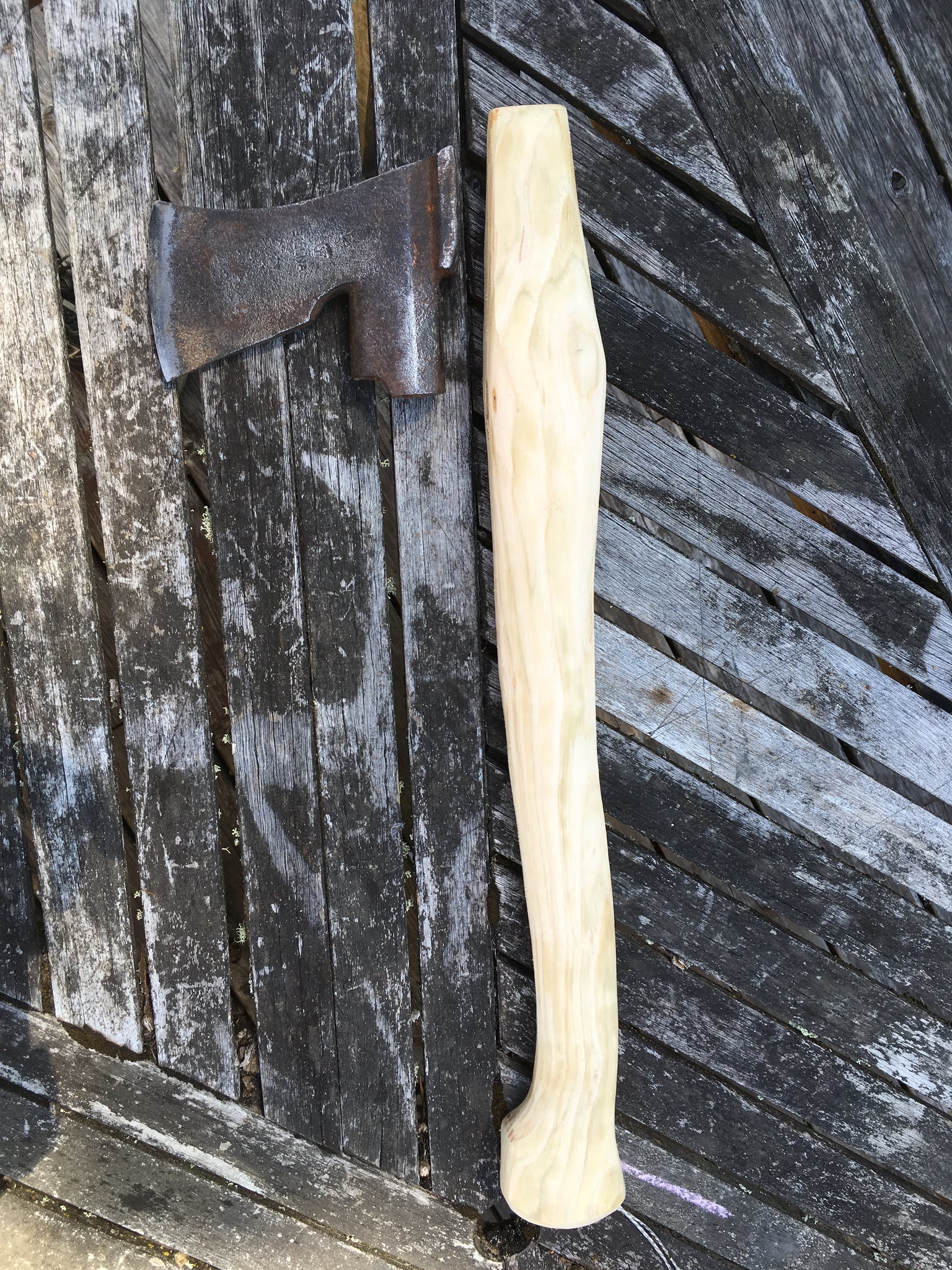 Cherry Flavored Kemi 12.3 by Agent Hierarchy, on Flickr
Cherry Flavored Kemi 12.3 by Agent Hierarchy, on FlickrFirst impression/on there enough to stick straight on its own. Smells good.
- Joined
- Jun 25, 2017
- Messages
- 908
X
Last edited:
If it's the Pin Cherry he scavenged and split into billets I'm looking forward to the warm colour after it's been left in the open air and out in the sun for awhile.Thats a nice looking handle! what kind of wood is it?
- Joined
- Aug 21, 2013
- Messages
- 3,898
Kevin, I believe it's some sort of Cherry.
It was taken down by freezing rain and wind. It grew on the windward side of the top of the kloof/heuvel where I live. The leeward side is all dense Silver Maple and large ferns, the other side is very large cedar, some sort of wet liking deciduous and alder. There is a clearing away from homes that is slowly being re-consumed by the trees but there is also what I believe to be a plum tree.
There is a natural spring that keeps some of the areas humid no matter how hot it gets or how long between rains. Lichens, moss, and I leave the nurse logs alone.
Square_peg lives in the same general climate/flora. It smells like Cherry and tastes bitter lol.
I trimmed off the sapwood so that should all be the heartwood in that handle for the most part. It lights up with a touch of BLO.
There are probably leaves on whatever I left on the stump.
I'll go check.
It was taken down by freezing rain and wind. It grew on the windward side of the top of the kloof/heuvel where I live. The leeward side is all dense Silver Maple and large ferns, the other side is very large cedar, some sort of wet liking deciduous and alder. There is a clearing away from homes that is slowly being re-consumed by the trees but there is also what I believe to be a plum tree.
There is a natural spring that keeps some of the areas humid no matter how hot it gets or how long between rains. Lichens, moss, and I leave the nurse logs alone.
Square_peg lives in the same general climate/flora. It smells like Cherry and tastes bitter lol.
I trimmed off the sapwood so that should all be the heartwood in that handle for the most part. It lights up with a touch of BLO.
There are probably leaves on whatever I left on the stump.
I'll go check.

Last edited:
- Joined
- Aug 21, 2013
- Messages
- 3,898
Ok, here is what is growing from the stump - It could be something opportunistic that took root in the moss but it needed cutting to get it off:
 Tree id fruit by Agent Hierarchy, on Flickr
Tree id fruit by Agent Hierarchy, on Flickr
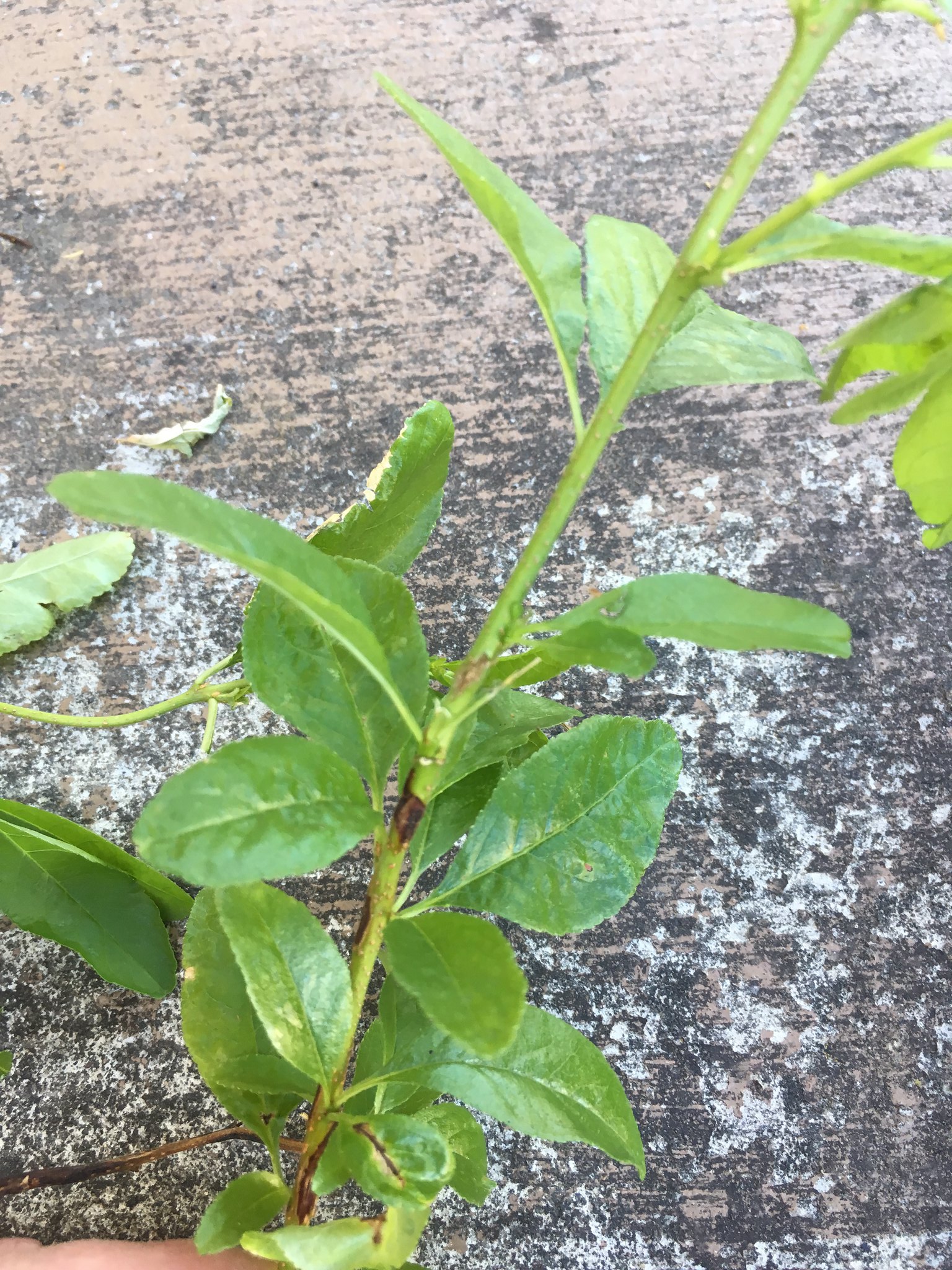 Tree id fruit by Agent Hierarchy, on Flickr
Tree id fruit by Agent Hierarchy, on Flickr
And this is what I thought was a plum of some sort – it has fruit now:
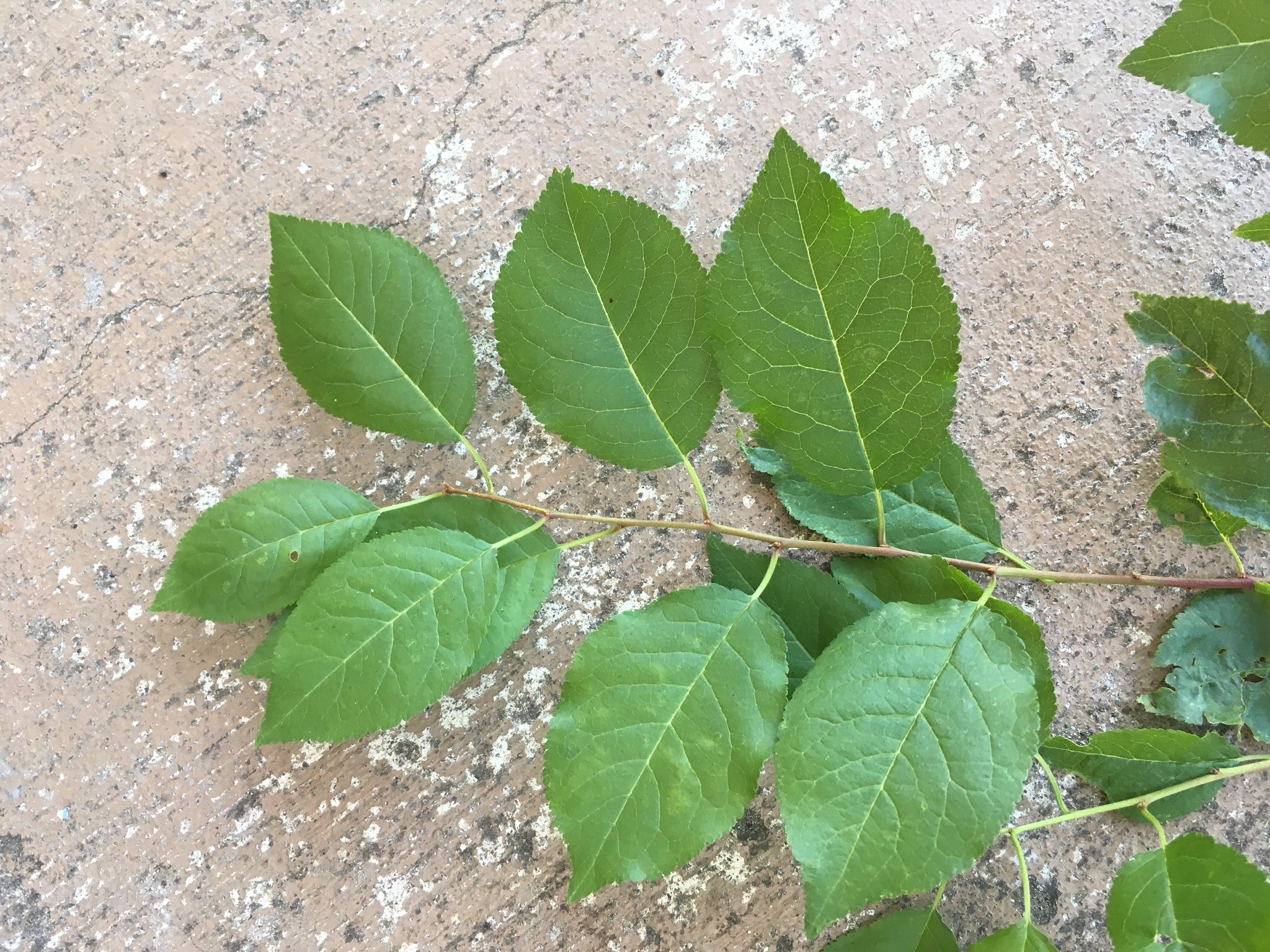 Tree id fruit by Agent Hierarchy, on Flickr
Tree id fruit by Agent Hierarchy, on Flickr
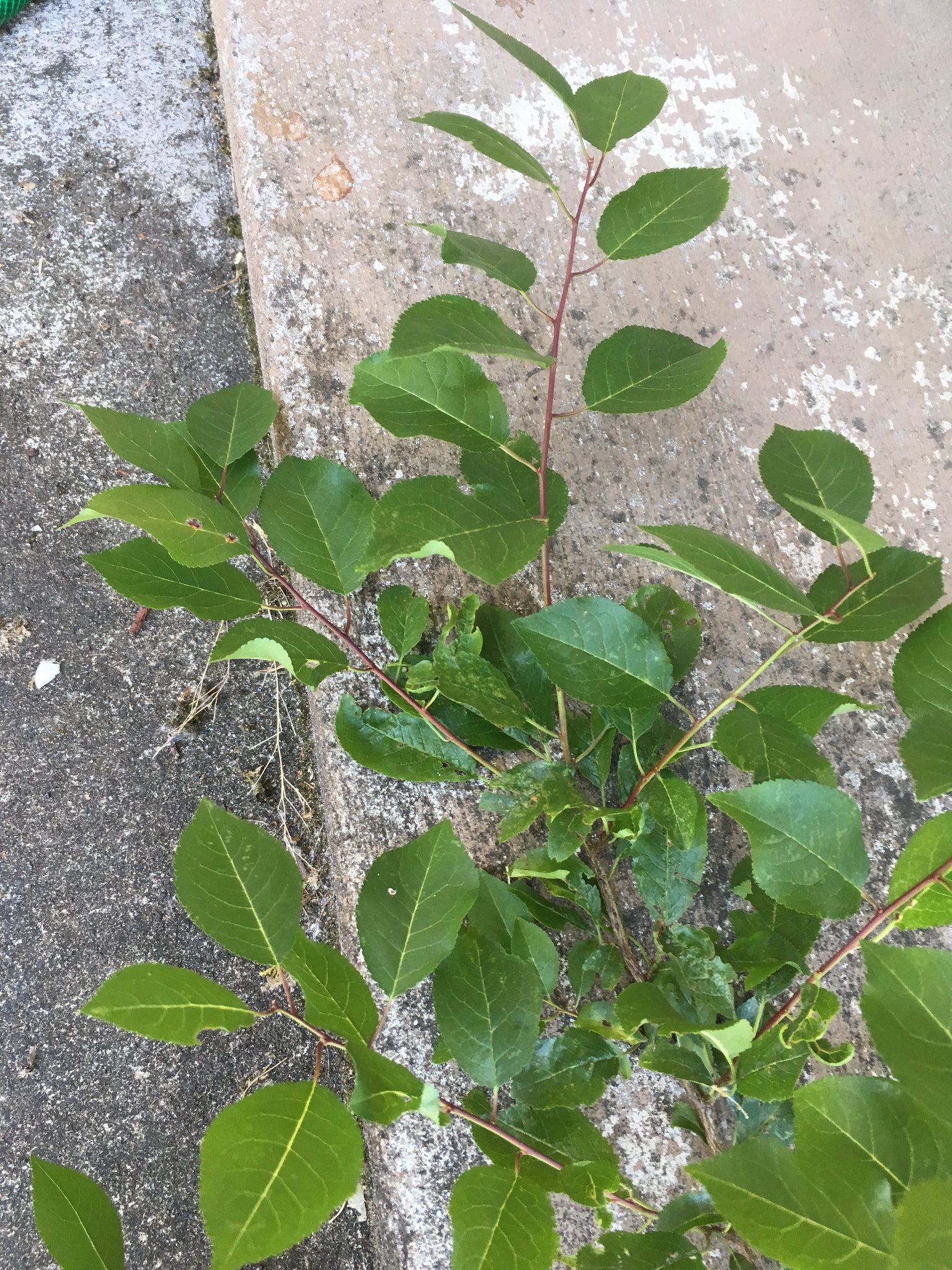 Tree id fruit by Agent Hierarchy, on Flickr
Tree id fruit by Agent Hierarchy, on Flickr
 Tree id fruit by Agent Hierarchy, on Flickr
Tree id fruit by Agent Hierarchy, on Flickr
 Tree id fruit by Agent Hierarchy, on Flickr
Tree id fruit by Agent Hierarchy, on Flickr Tree id fruit by Agent Hierarchy, on Flickr
Tree id fruit by Agent Hierarchy, on FlickrAnd this is what I thought was a plum of some sort – it has fruit now:
 Tree id fruit by Agent Hierarchy, on Flickr
Tree id fruit by Agent Hierarchy, on Flickr Tree id fruit by Agent Hierarchy, on Flickr
Tree id fruit by Agent Hierarchy, on Flickr Tree id fruit by Agent Hierarchy, on Flickr
Tree id fruit by Agent Hierarchy, on Flickr- Joined
- Jun 25, 2017
- Messages
- 908
X
Last edited:


